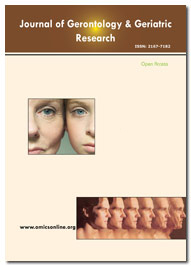Indiziert in
- Öffnen Sie das J-Tor
- Genamics JournalSeek
- SafetyLit
- RefSeek
- Hamdard-Universität
- EBSCO AZ
- OCLC – WorldCat
- Publons
- Genfer Stiftung für medizinische Ausbildung und Forschung
- Euro-Pub
- Google Scholar
Nützliche Links
Teile diese Seite
Zeitschriftenflyer

Open-Access-Zeitschriften
- Allgemeine Wissenschaft
- Biochemie
- Bioinformatik und Systembiologie
- Chemie
- Genetik und Molekularbiologie
- Immunologie und Mikrobiologie
- Klinische Wissenschaften
- Krankenpflege und Gesundheitsfürsorge
- Landwirtschaft und Aquakultur
- Lebensmittel & Ernährung
- Maschinenbau
- Materialwissenschaften
- Medizinische Wissenschaften
- Neurowissenschaften und Psychologie
- Pharmazeutische Wissenschaften
- Umweltwissenschaften
- Veterinärwissenschaften
- Wirtschaft & Management
Abstrakt
Health-Related Quality of Life Measurement Inpatient Geriatric Rehabilitation: A Comparison of the Feasibility and Suitability Between the SF-36 and EQ-5D-5L Questionnaires
Grund S*, Breitinger E, Fricke S, Alpers GW, Hundsdörfer W and Schäfer HG
Background: A key goal of geriatric rehabilitation is the improvement of health-related quality of life (HRQoL). Although recommended in several medical guidelines the measurement of HRQoL is not yet routinely performed and it is not yet examined, whether and how this could be routinely measured in an in-patient geriatric rehabilitation setting.
Method: In a prospective cross-sectional study, 86 patients from our rehabilitation clinic completed the SF-36 and the EQ-5D-5L. We analysed the questionnaires’ feasibility and suitability operationalized in the needed assistance, the amount of time for completion, occurring questions and missing values.
Results: 46.5% of the participants needed strong assistance completing the SF-36 with an average completion time of 11:36min. Items concerning the physical dimensions showed the most missing values as well as items referring to ‘daily activities, at work or at home’. 41.9% of the participants relied on strong assistance for the completion of the EQ-5D-5L. The item referring to ‘usual activities as e.g. work’ had the most missing values.
Conclusion: The general feasibility of the SF-36 and EQ-5D-5L for measuring HRQoL in in-patient geriatric rehabilitation could be confirmed. However, the EQ-5D-5L seems to be more suitable for a routinely use. Due to the items, mental health might be underrepresented compared to the SF36.